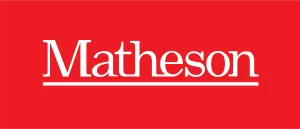- within Compliance, International Law, Media, Telecoms, IT and Entertainment topic(s)
The EBA Opinion
In September 2019, the European Banking Authority ("EBA") announced its intention to give clarity on grandfathering measures in relation to the Capital Requirements Regulation ("CRR") in 2020; we wrote about this shortly after that announcement. The EBA issued that promised opinion on 21 October 2020.
As we noted in our update last year, when the CRR entered into force, grandfathering provisions were introduced. Namely, in order to give institutions sufficient time to meet the requirements set out by the new definition of 'own funds', certain capital instruments that, at that time, did not comply with that definition were grandfathered for a transition period with the objective of phasing them out from own funds. The beneficial treatment provided for such 'legacy instruments' by the CRR1 grandfathering provisions will end on 31 December 2021. The EBA's opinion is intended to allow institutions to adequately prepare for the end of the grandfathering period.
Infection Risk
The EBA opinion is chiefly concerned with the 'infection risk': the risk that other layers of own funds or eligible liabilities instruments might be disqualified due to non-compliance of certain aspects of the legacy instruments.
The EBA's analysis mainly considered grandfathered Additional Tier 1 (AT1) instruments that may be cascaded down to a lower category (namely, Tier 2 instruments or instruments eligible for inclusion in total loss-absorbing capacity (TLAC) or minimum requirement for own funds and eligible liabilities (MREL)), as these appear to account for the majority of outstanding legacy instruments.
The opinion identified two main issues which could create the infection risk:
- Interaction between capital instruments' distribution payment features and the principle of the flexibility of distribution payments. The EBA concluded that many mechanisms such as dividend pushers and dividend stoppers are in conflict with the principle of full flexibility of payments with regard to CET1 instruments. Article 53(a) and (b) of the CRR2 sets a clear requirement that instruments must not include such clauses in their terms and conditions if they are to be eligible as AT1 instruments.
- Clauses that might contradict the eligibility criterion of subordination. The EBA concluded that the CRR provisions covering the ranking of CET1, AT1 and Tier 2 instruments are clear: CET1 instruments are subordinated to all other claims, AT1 instruments are subordinated to Tier 2 instruments, and Tier 2 instruments are subordinated to any claims from eligible liabilities instruments. The provisions governing legacy instruments might not satisfy those ranking rules.
Proposals
To address the infection risk and preserve the quality of regulatory capital, the EBA envisages two main options:
a) institutions can either call,
redeem, repurchase or buy-back the relevant instrument; or
b) amend the terms and conditions.
Where institutions can demonstrate to their competent authorities that neither of these two options can be pursued, the EBA proposes a third option:
c) allow institutions to keep the legacy instrument on their balance sheet while excluding it from regulatory own funds and TLAC / MREL eligible instruments.
The EBA will continue to monitor the situation of the legacy instruments until the end of the grandfathering period, and will consider the transposition of specific provisions of Directive 2014/59/EU (the Bank Recovery and Resolution Directive) into national legislation and how this might alleviate concerns about the existence of infection risk linked to subordination aspects.
The content of this article is intended to provide a general guide to the subject matter. Specialist advice should be sought about your specific circumstances.



